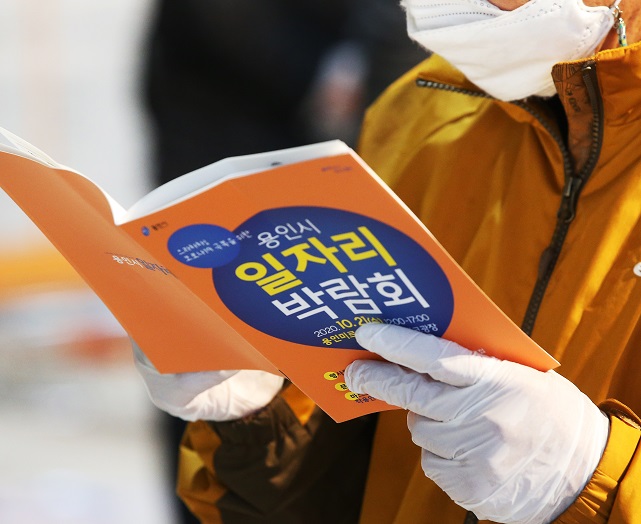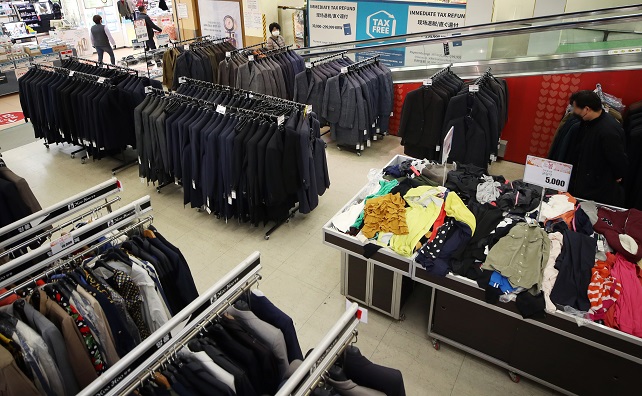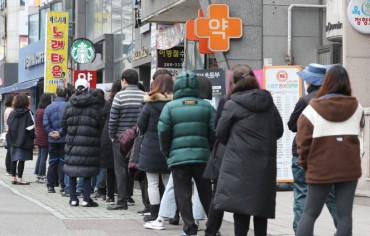
In the file photo taken Oct. 21, 2020, a jobseeker wearing a mask and plastic gloves reads a pamphlet at a job fair in Yongin, 49 km south of Seoul, on Oct. 21, 2020. (Yonhap)
SEOUL, Dec. 11 (Korea Bizwire) — Almost half of South Koreans either lost their jobs or saw their income fall due to the new coronavirus outbreak, a report showed Friday, in a sign that the job market remains sluggish amid the pandemic.
The report by Statistics Korea showed that 49.7 percent of respondents said the pandemic affected their income level or job posts, with 26.7 percent of them saying that their income shrank, though they kept working.
The statistics agency said 50.3 percent said they had not lost their jobs and their income level had not changed as of May.
South Korea’s job market has remained bleak this year due to the pandemic, with the country reporting job losses every month since March.
Temporary workers and the bottom 20 percent income bracket took the biggest beating from the pandemic fallout, as they did so during previous financial crises, including the 1997-98 Asian financial crisis.
Temporary workers or day laborers saw their disposable income fall 3.4 percent on-year in the first quarter of this year, while the bottom 20 percent income group’s disposable income grew a mere 0.2 percent on-year, the report said.
This compared with workers with permanent jobs whose disposable income rose 3.7 percent on-year. The top 20 percent income bracket saw their disposable income increase 6.5 percent in the cited period.

This photo, taken on March 3, 2020, shows sales sections of clothes at a large discount store in Seoul. (Yonhap)
South Korean households, meanwhile, reduced spending on semi-durable goods, such as clothes and shoes, by the most among consumer goods during the virus outbreak, showing a similar pattern as during the 1997-98 Asian financial crisis.
Households’ consumption contracted 6.5 percent on-year in the first quarter of the year, when the country was gripped by the first wave of the pandemic.
Consumption remained sluggish this year as people refrained from visiting offline stores due to concerns about virus infection risks and tougher social distancing guidelines.
Amid the pandemic, Korean households’ purchases of clothes and shoes declined the most.
The bottom 20 percent income bracket and temporary employees curtailed consumption of clothing and shoes more than anything else this year.
But the top 20 percent income group and permanent workers reduced the use of private education services more.
The report said the pandemic dealt a severe blow to the face-to-face service segments, including the wholesale and retail industry, accomodation and food services and education service providers.
This is different from the situation during the 1997-98 Asian financial crisis and the 2008 global financial turmoil, when the manufacturing and construction industries took the biggest beating.
During the previous crises, education services were not affected until households felt severe economic pinch, but the COVID-19 pandemic had an immediate and grave impact on the segment, the report said.
(Yonhap)






